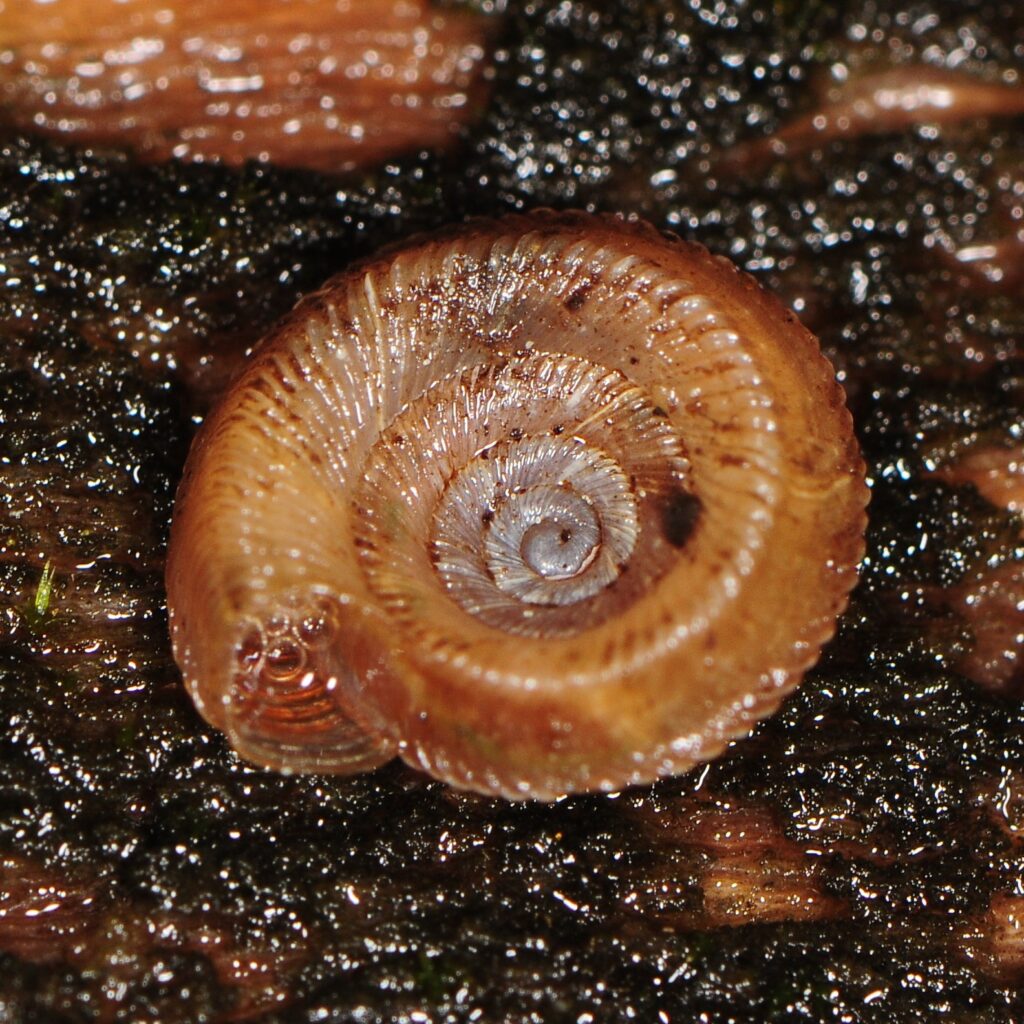



Image Usage Information
Family: Discidae
Common name: Saw-tooth Disc
Discovery: Harper, 1881
Identification
Width: 5.5–6.0 mm
Height: 2.0 mm
Whorls: 5
The shell of Discus bryanti has a relatively flat apex with a widely open umbilicus, making it easy to count the whorls by looking at the underside. The shell is bicarinate, meaning that both the bottom and the top of the whorl are angled, with almost square edges, though the top is more sharply angled than the bottom. Heavy radial ribbing covers the top and bottom of the shell, but these are less defined along the flattened edge.
According to Pilsbry, the live animal is pale bluish white and is usually found singly, rather than in groups. The embryonic whorl of this species is unique in starting out smooth but quickly developing radial groves overlain by striae (MacMillan, 1940).
Ecology
Discus bryanti has been found in and under rotting logs (Pilsbry, 1948), but also in leaf litter in rocky upland woods (Hubricht, 1985).
Taxonomy
Synonyms for D. bryanti are Discus perspectiva var. carinata, Gonyodiscus bryanti and Patula bryanti.
Distribution
This species is reported from Alabama, North Carolina, and Tennessee. It is not clear if it is found in Virginia (NatureServe, 2012).
Conservation
NatureServe Global Rank: G3
Publication date: 7/2012
